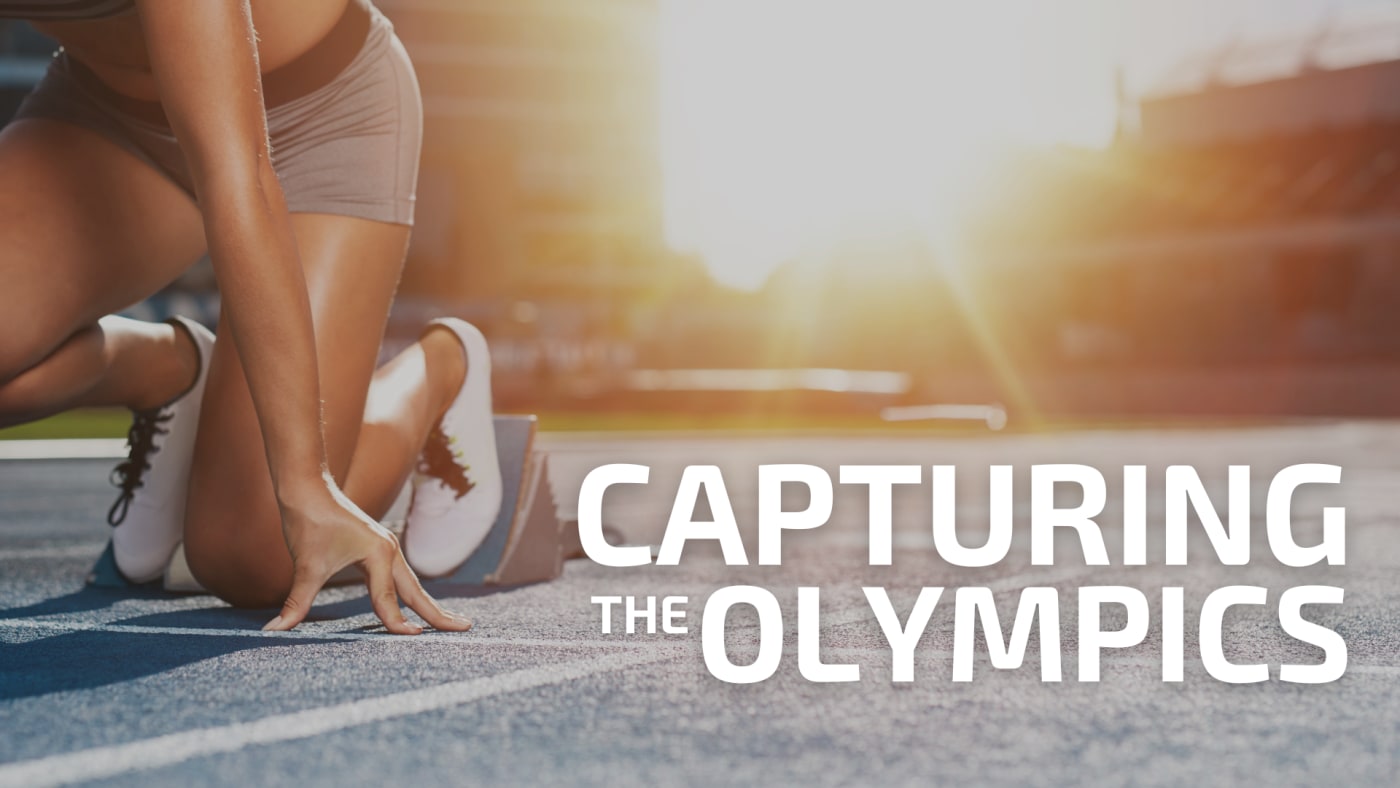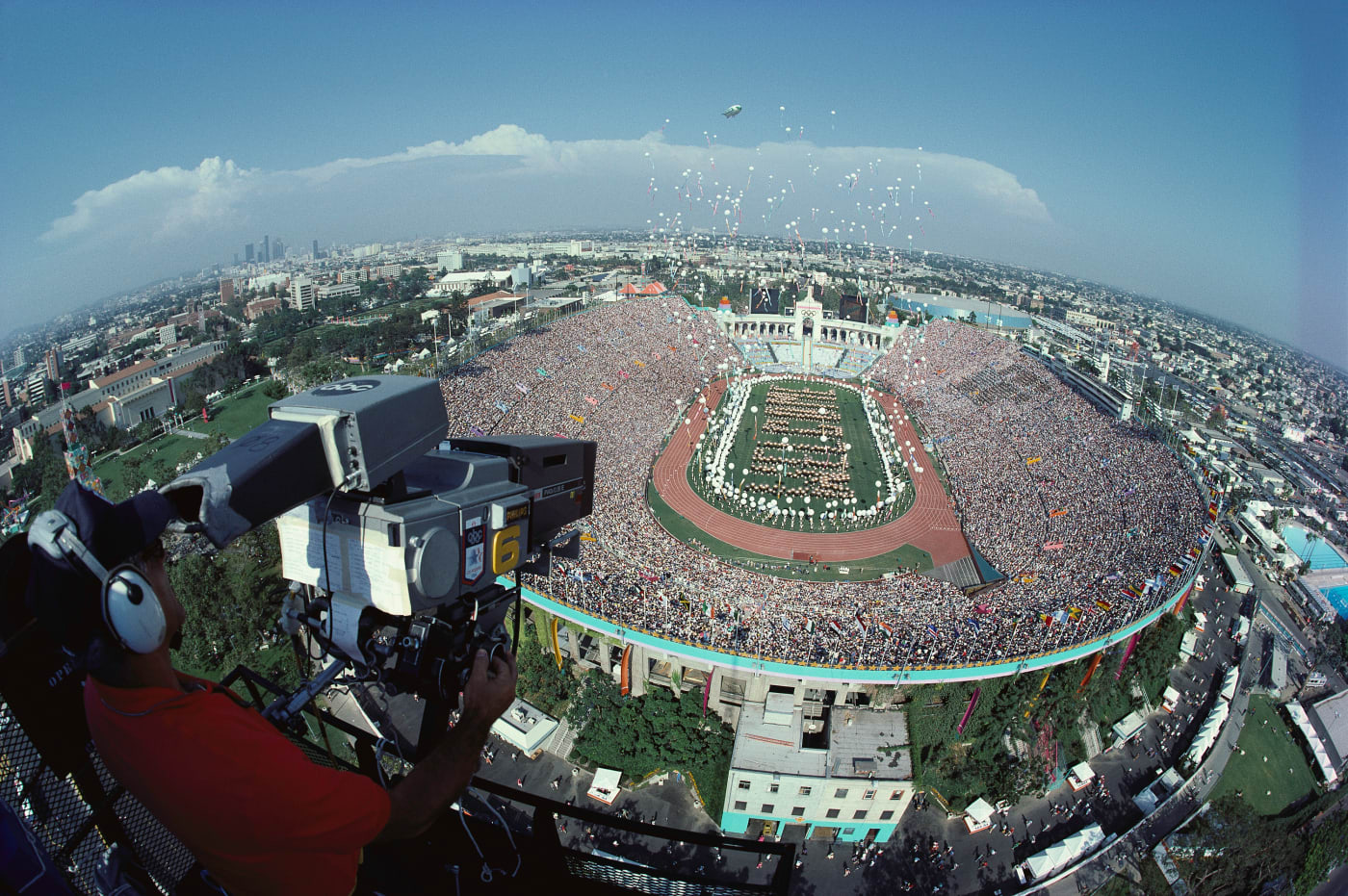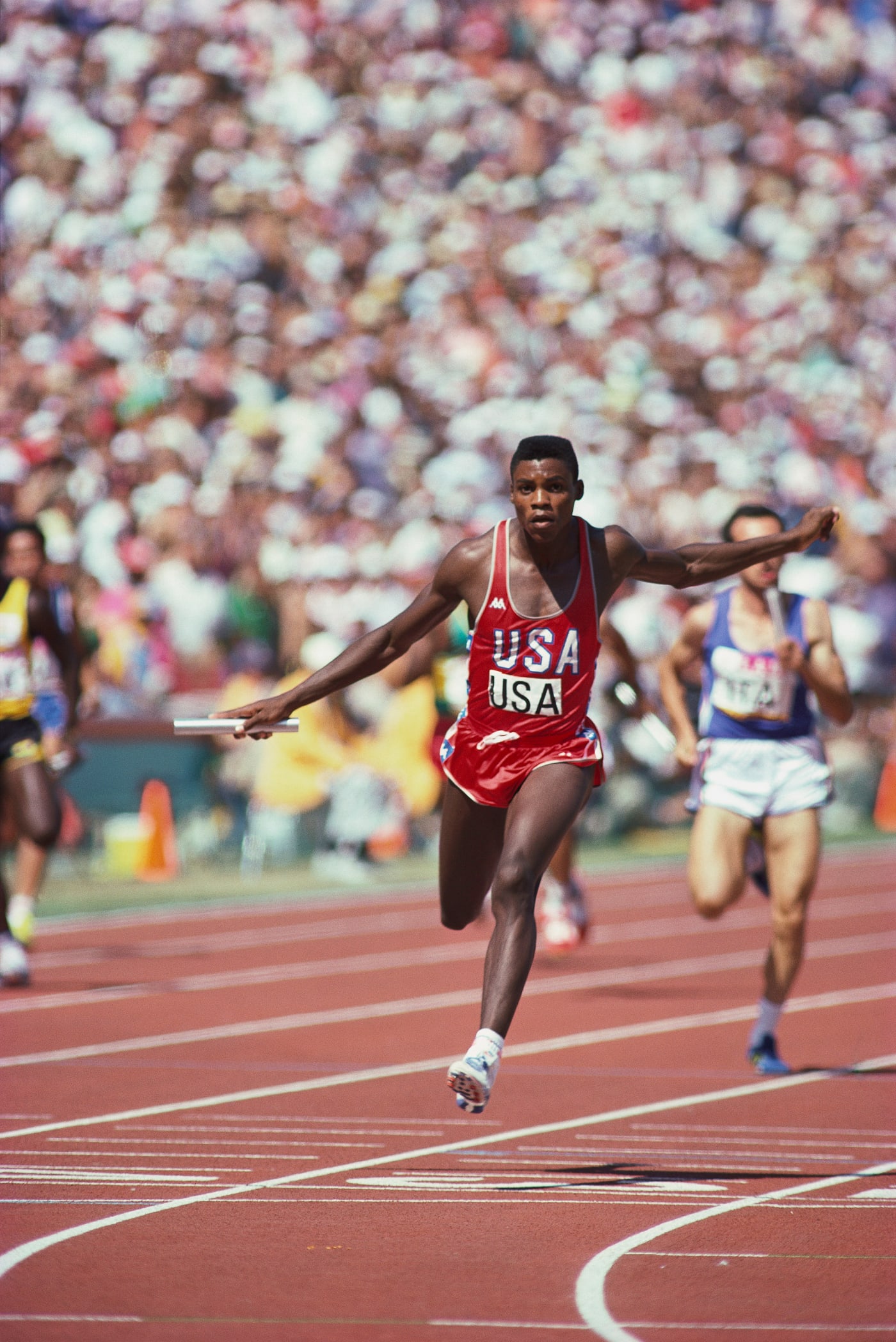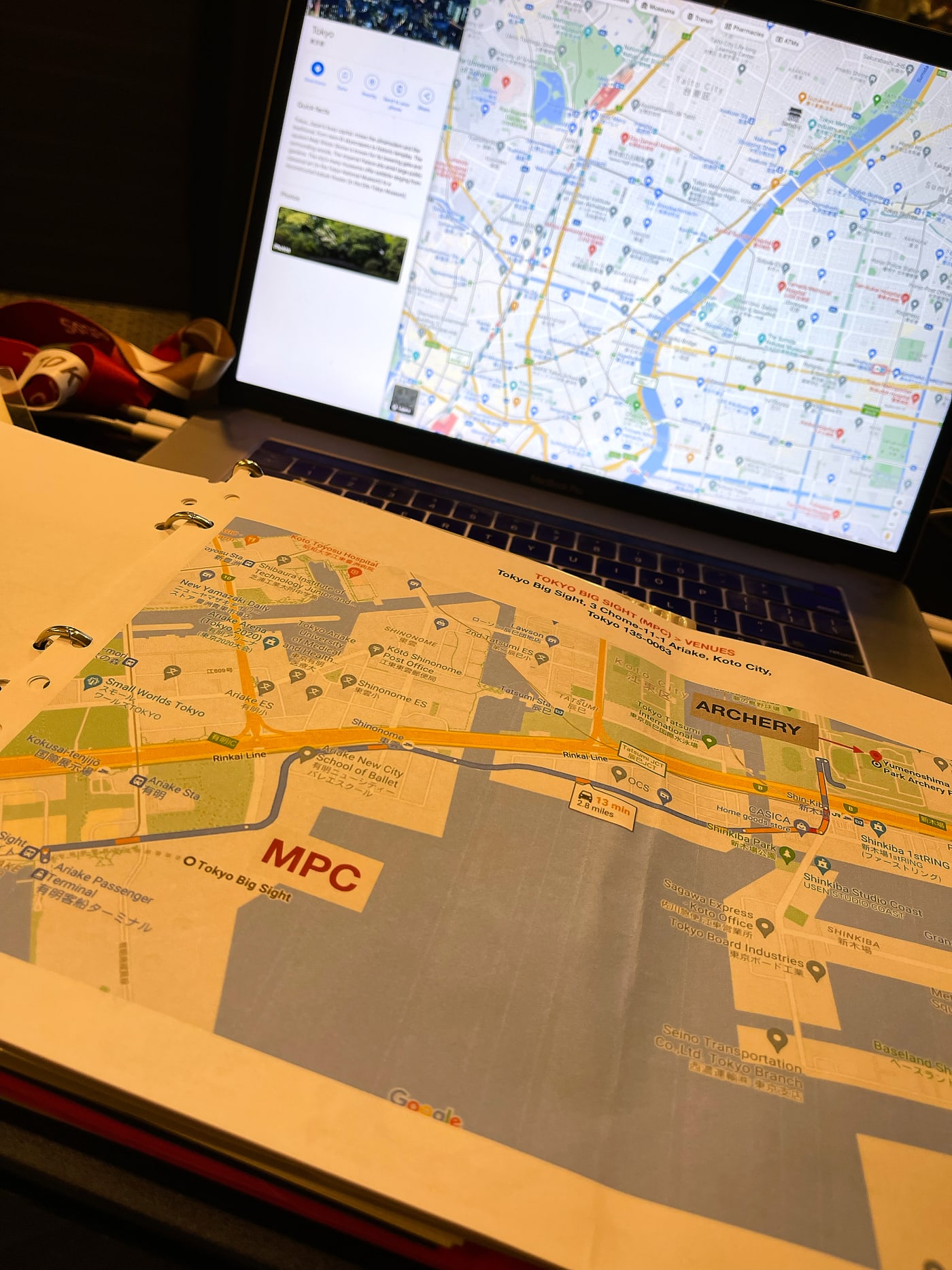Capturing the Olympics: Cameras at the Games Continue Shooting Faster, Higher, Stronger
This year’s Summer Olympic Games felt like the first that truly met the moment on social media. But what equipment and strategy does it take to capture the Olympics?
Jourdan Aldredge • Sep 04, 2024

This year’s Summer Olympics just hit different, didn’t they?
For the first time in a long time, it felt like the Olympic Games truly and fully captured the attention and imagination of everyone watching around the world. Coverage was everywhere: in print, on TV, in advertising, and—probably most of all—on social media.
The 2024 Paris Games of the XXXIII Olympiad felt like the first installment to fully succeed at tapping into the 24/7 conversation and meme-fest that is social media. Clips, photos, and highlights of big competitions were everywhere leading the creation of countless new memes that will live on long after the closing ceremony. In the process making some heroes like Simone Biles even more iconic while establishing new heroes like U.S. gymnast Stephen Nedoroscik, or Turkish sharpshooter Yusuf Dikec.
And for that reason, the unsung heroes of the Olympics were the Canons, Nikons, Sonys, and countless other major brands and manufacturers who provided the latest and most sophisticated cameras and gear ever seen.
Thanks to these brands' innovations and technology we were able to see some of the most breathtaking and awe-inspiring photos and videos that have ever been captured. Let’s look a bit more in-depth and behind-the-scenes at what cameras were used and how they were able to so beautifully, and artistically, capture the 2024 Summer Olympics.
A Brief History of Digital Cameras at the Olympics
The first digital camera used at any Olympic event was a Canon D413, a prototype designed specifically for the 1984 Olympics in Los Angeles.
The technology was so under ripened back then that it reportedly took 30 minutes just to send captured images back to Japan via telephone lines.
From there, the digital camera revolution really took hold in the early 2000s, which ultimately culminated with the DSLR camera becoming the most popular digital camera type for live sports coverage—and practically everything else—by the mid 2000s.
The 2008 Olympics in Beijing would go on to be the first Olympics to be fully dominated by digital cameras for both photo and video. However, as those who worked with DSLR camera technology back then can tell you, it was not without its limitations.
These early DSLRs were lower resolution and offered no stabilization, subject or eye tracking, or any advanced connectivity. The early DSLRs also used slower CF cards and slots which, at times, made for some painful backing up and clearing processes.
First-hand Insights into the Evolution of Olympic Cameras

To get further insight into capturing the Olympics, we spoke with veteran photographer Joe McNally about how he’s witnessed camera technology change over the years. “It’s evolved in astounding ways,” McNally says.
McNally has been shooting the Games since the Los Angeles Summer Games in 1984. Since then, he’s also shot the Sydney Games in 2000, Rio in 2016, and Tokyo in 2021.
“1984 was obviously on film, and I remember being sent up to a massive crane the TV guys called ‘God’s Eye’ with the promise I would be stable and still so I could shoot overalls of the LA Coliseum,” he recalls. “I specifically remember shooting Kodachrome and putting roll after roll in my bag, all the while eyeballing the TV cameraman’s image which was at that moment being seen by millions of people.”
During that same Olympics, McNally captured this iconic image of sprinter and U.S. hero Carl Lewis.

McNally says he continued shooting film in the 2000 Games in Sydney. He shot those games for Time magazine, which at that time was a bit pre-occupied with a slightly controversial Gore v. Bush Presidential election.
“The magazine was completely wrapped around Bush v. Gore,” he says. “I also didn’t shoot well, and even though I did get a Time cover out of it, I was disappointed.”
Rio in 2016 represented McNally’s inaugural all-digital Games. “I was jacked into an ethernet cable and my editor was seeing my images as I was shooting them—a far cry from that crane view in L.A.,” he recalls. “By the time Tokyo rolled around in 2021, I was an agency photog, processing and shipping off my computer as fast as I could. Such a different world.”
You also need a solid strategy for shooting the Games—especially if you’re a one-man operation like McNally often was. McNally says each Games requires a lot of research before arriving. Who are the biggest athletes? Which are favored for their events? What countries or teams are making headlines in the news cycle?
“For Rio, it was Usain Bolt,” McNally says. “For Tokyo [and Paris] it was Simone Biles. You’ve got to know these things in advance but you also have to be able to adjust to how the stories shift while at the Games as well.”
“My wife Annie and I did a lot of team planning here at my studio for Tokyo and that continued after we got to the Games. We plotted day after day, what would be the bus routes, how could I get most efficiently from one venue to the other, and whether I could only get to one, or two, or—on a rare day—three events.”

McNally adds that it’s also important to make sure you’re covering things that you are passionate about and not just things that you’ve been assigned to.
“I love to cover weightlifting, boxing, Greco-Roman wrestling, track and field and table tennis,” he says. “Yes. Table tennis. It’s an unbelievably fast sport and you can be right on top of the action.”
The Mirrorless Camera Revolution
By the mid-2010s, the digital camera industry was ready to shift again as technology pushed mirrorless cameras to the forefront. These smaller, faster, and more powerful cameras would quickly replace the large and bulky DSLRs that preceded them.
And as we’ve seen at this most recent Olympics, mirrorless cameras have dominated the landscape thanks to their high resolution photo and video capabilities. These mirrorless cameras also feature more advanced perks like subject and eye tracking technology, high-speed burst photography capabilities, better stabilization and focus speeds, full connectivity options, and much faster card slots and buffer clear options.
McNally has made the switch to a mirrorless kit as well.
“I shot Tokyo on Nikon D6 cameras, which are phenomenal machines, but—and this is how fast things move—when I came back to the states I got a chance to shoot Nikon’s mirrorless flagship, the Nikon Z9. And oh did I wish I had those in Tokyo,” he says. “The performance of the Z9 is astounding—ever faster, necessitating the need for fast flash memory cards and drives. At 11 p.m., editing and filing after track and field, knowing you still have to catch a bus back to your hotel, which on the route map takes an hour, and you have a 4 a.m. wakeup call—well, that makes every second of editing speed precious.”
If the 2024 Olympics showed us anything, it’s that mirrorless camera technology is still very much the preferred camera system type, and the most recent innovations from the biggest players in the camera world have pushed these mirrorless cameras to new, and exciting, levels.
A Look at the Cameras of the 2024 Olympics
According to data compiled by LensRentals, some of the most popular cameras used to photograph the 2024 Summer Olympics were “sports-focused” cameras like the new Canon EOS R1 and the Sony a9 III. But there were also plenty of other manufacturers being represented by their top-of-the-line offerings such as the Nikon Z9, Fujifilm GFX 100S II, and Panasonic LUMIX GH7.
What was really amazing, from a camera-perspective, from this year’s Olympics though were some of the creative—and at times intergratal—ways in which cameras were used to capture and document some of the biggest events, but also even decide some of the closest photo finishes.
Check out this link for a fascinating behind-the-scenes look at how photographers were able to capture some of their best images and moments from the 2024 Olympics.
And here’s a sampling of some of the awesome photos which were coming in day-to-day at the Olympics shared by Associated Press photographers.
The Best Photos of the 2024 Paris Olympics
As the world’s gaze was collectively turned to Paris this year, we truly saw some of the best photographs taken at any Olympic games ever. Using the latest gear and technology photographers, videographers, and content-capturers had more tools at their disposal than ever before.
And the results have been both awesome and awe-inspiring to roll across our collective social feeds over the Olympics’ 19 days of competition. Here are some of our favorite photographers and their best images from this year’s Olympics Games.
Jerome Brouillet
https://www.instagram.com/p/C-Dq2nYvnmZ/?hl=en
Atiba Jefferson
https://www.instagram.com/p/C-l5vOQP4jC/?hl=en
https://www.instagram.com/p/C-SivDTtCq4/?hl=en
https://www.instagram.com/p/C-qVUYhSu8y/?hl=en
Geoff Lowe
https://www.instagram.com/p/C-qR3tBobu9/?hl=en
https://www.instagram.com/p/C-mpHXJIPEa/?hl=en
https://www.instagram.com/p/C-lbVoSoczA/?hl=en
The Power of Modern Digital Imaging
Cameras and digital imaging technology are front and center for many other events this year as well. For example, one of the most impressive camera feats from this year’s Olympics was performed by a camera designed by the Olympics’ official timekeeping company Omega.
This custom-produced camera was designed to decide the winners of track meets, which can come down to a matter of millimeters, let alone milliseconds. To meet this challenge, the camera is capable of capturing an unbelievable 40,000 frames per second.
According to Axios, the Omega camera was able to take “four times as many pictures per second” and add “higher resolution, perfect for tough calls,” like deciding the winners of the men’s 100m final.
You can watch a video about Omega’s photo-finish camera technology here:
And to give you an idea of how far we’ve come, here’s a video of how photo-finishes were captured almost 100 years ago.
The Future of Cameras at the Olympics
The 2024 Olympics were fun and fascinating to watch not just for the athletic competition, but also as a showcase for the best—and most future-focused—technology in the world. And this technology shows no signs of slowing down.
“The current state of camera technology is relentless,” McNally says. “The emphasis on bigger files and faster rates of shooting, accuracy of auto focus, brightness and ease of viewing. I suspect by the LA Games in 2028, all those things will have improved even further.”
How much further, you might ask? McNally says nothing would surprise him at this point.
“For myself, the Nikon Z9 I shoot today would have been straight out science fiction when I started my career,” he says. “My first Olympics was all film, all manual focus. No confirmation. No lock solid assurances. And the finish line for track and field was badly backlit!
“I’ve never been a huge fan of technology for technology’s sake, but the more intuitive the camera tech gets, the better I can do my job. That aspect of camera improvements, I heartily endorse.”